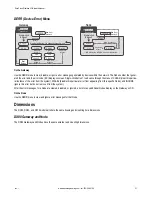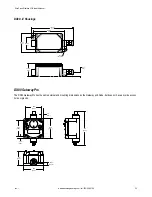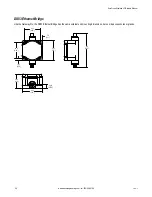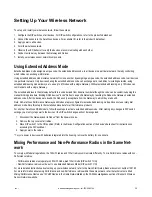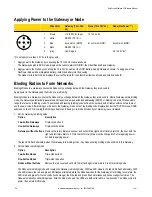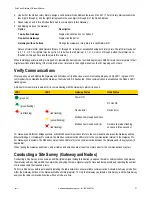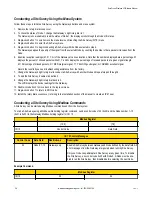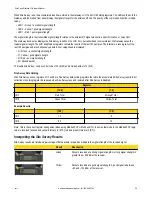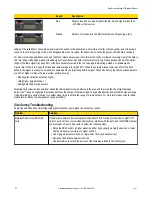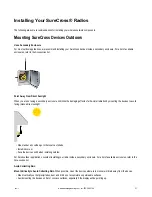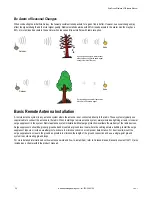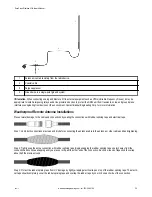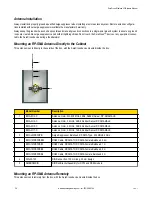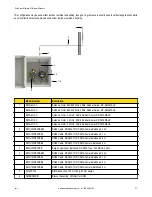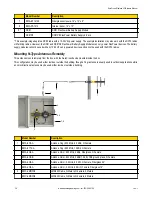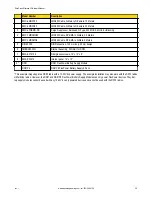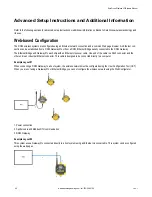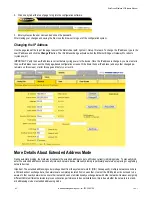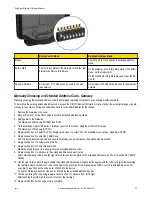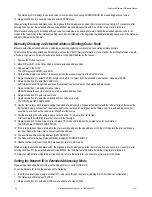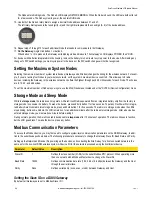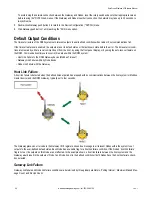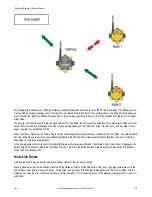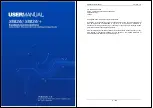
1
2
3
4
1
Antenna mounted remotely from the radio device.
2
Coaxial cable
3
Surge suppressor
4
Ground wire to a single-point ground system
I/O Isolation. When connecting analog and discrete I/O to external equipment such as VFDs (Variable Frequency Drives), it may be
appropriate to install interposing relays and/or loop isolation devices to protect the DX80 unit from transients, noise, and ground plane
interference originating from devices or the environment. Contact Banner Engineering Corp. for more information.
Weatherproof Remote Antenna Installations
Prevent water damage to the cable and connections by sealing the connections with rubber splicing tape and electrical tape.
Step 1: Verify both connections are clean and dry before connecting the antenna cable to the antenna or other cable and hand-tightening.
Step 2: Tightly wrap the entire connection with rubber splicing tape. Begin wrapping the rubber splicing tape one inch away from the
connection and continue wrapping until you are one inch past the other end of the connection. Each new round of tape should overlap
about half the previous round.
Step 3: Protect the rubber splicing tape from UV damage by tightly wrapping electrical tape on top of the rubber splicing tape. The electri-
cal tape should completely cover the rubber splicing tape and overlap the rubber tape by one inch on each side of the connection.
SureCross Wireless I/O Network Manual
rev. I
www.bannerengineering.com - tel: 763-544-3164
35

